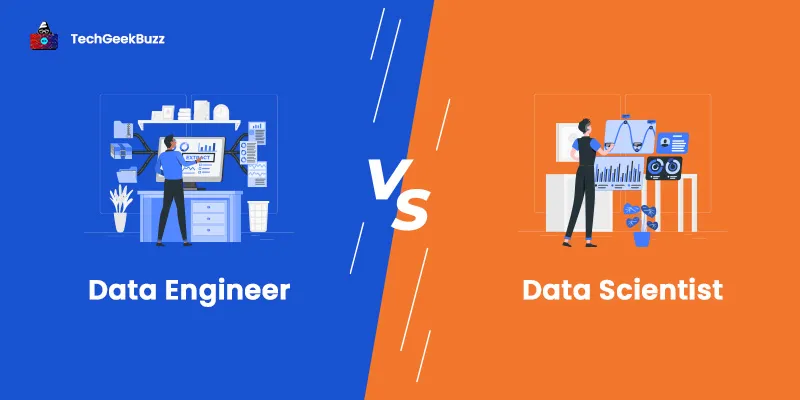It is essential to store data in a database in an optimized manner that reduces storage requirements, eliminates redundancy, and enables faster data retrieval. This is where data modeling comes into play.
Data has become one of the most important assets today, and it is significantly changing the way the world runs. Even many people refer to the current era as the age of information, as it is highly dependent on data. Businesses are leveraging data to make their processes smooth, understand customer behavior, improve customer experience, and make more informed business decisions.
This article intends to help you get familiar with data modeling, data models, and the key uses of a data model. Also, you will get acquainted with different perspectives and types of data models, along with the advantages and disadvantages of data modeling.
So, without any further discussions, let us get started.
What is a Data Model?
A data model is an abstract model that organizes and visually represents data elements and their connections. Alternatively, we can say that a data model organizes data through data semantics, data description, and consistency constraints. It primarily focuses on what data is required and how it should be organized rather than what operations to carry out on data.
Every organization has vast amounts of data, and if there is no benchmark or baseline to ensure the interpretation of data, it remains useless. Therefore, we can refer to a data model as an architect’s building plan to develop conceptual models and set relationships between data items.
Uses of a Data Model
Below are some of the significant uses of a data model:
- A data model ensures that it accurately represents all data objects required by the database . Therefore, there is a reduced risk of data omission. Moreover, it helps to avoid faulty reports and incorrect errors.
- It allows organizations to design the database at three different levels, namely conceptual, physical, and logical.
- A data model enables us to define relational tables, primary and foreign keys, and stored procedures.
- It helps to determine redundant, duplicate, and missing data in a database.
- Data models can considerably improve the data analysis process as they represent data visually and provide a holistic view of data.
- A data model comes in handy for portraying business requirements in a better way.
- A good and qualified data model helps organizations to attain better consistency across all projects.
What is Data Modeling?
Data modeling is a procedure of creating a visual representation of a data model or an information system for the data present in a database and describing data constraints and associations. It ensures the quality of data stored in the database and consistency in data semantics, data security, default values, and naming conventions.
Moreover, data modeling defines schemas and techniques that provide a typical approach for managing data resources within an organization. It imposes business standards, regulatory compliance, and government policies on the data.
Perspectives of the Data Model
There are primarily three different perspectives of the data model, which are conceptual, logical, and physical. Each perspective has its own purpose and uniquely represents how the data is stored in a database.
Let us discuss each perspective in detail below:
1. Conceptual Model
The conceptual data model defines WHAT does a system hold. Generally, business stakeholders and data architects create it. The principal goal of the conceptual data model is to organize and define business rules and standards.
In addition, this data model establishes entities, their attributes, and the relationship between them. This level of data model hardly describes the actual structure of the database. It has three tenants:
- Entity : A real-world object.
- Attribute : An entity’s properties or characteristics.
- Relationship : The association between two different entities.
Characteristics
- Conceptual data models are ideal for the business audience.
- Data architects or business stakeholders build this type of data model independent of hardware specifications, like data storage capacity and location, or software specifications, like DBMS .
- It provides organization-wide coverage of business concepts.
2. Logical Model
The logical data model defines the way the system should be implemented, irrespective of the database management system. It defines the structure of the data elements and the relationships between them. Also, this data modeling level adds details to the conceptual data elements.
Data Architects and Business Analysts are responsible for creating the conceptual data model. This data model acts as a foundation for the logical model, and the logical model sets the foundation for the physical data model, which we will discuss next. It does not involve defining secondary or primary keys.
Characteristics
- The logical data model describes the data required for a single project. Also, it supports the integration of the data with other logical models depending upon the project’s scope.
- Data types of data attributes have precise length and precision.
- This data model supports database normalization till 3NF.
3. Physical Model
This data model defines HOW to implement the system using a particular database management system. Database Administrators and Developers are responsible for creating the physical data model. At this data modeling level, the actual implementation of the database takes place.
Characteristics
- The physical data model describes the data required for a single project but does not support the integration of data with other physical models depending upon the project’s scope.
- It defines primary and foreign keys, access profiles, authorization, indexes, views, and so on.
- Columns in this type of data model should have precise lengths, data types, and default values.
- Database administrators and/or developers create the physical data model for a particular version of a database management system, data storage, location, or technology.
Types of Data Models
1. Hierarchical Model
The hierarchical data model follows a tree-like structure, where each record has one parent or root node, and other nodes are sibling records that are sorted in a specific order. All nodes in the hierarchical model have a one-to-many relationship between them. IBM’s Information Management System (IMS) is one of the best examples of the hierarchical data model. Businesses in various sectors use IMS, particularly the banking sector.
Let us see one example to understand the hierarchical model. Consider that there are several students and courses. Each student can enroll in as many courses as they wish. Let us say there are five students and three courses. Also, each student has three attributes: Student_ID, Student_name, and Age, and each course has two attributes: Course_ID and Course_Name.
2. Relational Model
The relational data model is an alternative to the hierarchical data model. It employs inter-related tables that contain data in the form of rows and columns. Each column in the relational model represents an entity’s attribute, whereas a row represents a record.
This data model gives a clear and detailed understanding of physical data storage. Let us take the students’ data that we have used earlier in the hierarchical model and understand what a relational model looks like.
Students Table
| Student_ID | Student_Name | Age |
| S01 | John | 25 |
| S02 | Oliver | 26 |
| S03 | Sammy | 24 |
| S04 | Bob | 27 |
| S05 | George | 28 |
Course Table
| Student_ID | Course_ID | Course_Name |
| S01 | C02 | Computer Algorithms |
| S02 | C01 | JavaScript |
| S03 | C03 | Python |
| S03 | C01 | JavaScript |
| S04 | C02 | Computer Algorithms |
| S05 | C03 | Python |
| S05 | C01 | JavaScript |
3. Entity-Relationship (ER) Model
The entity-relationship model represents a diagram that presents the database elements graphically, thus making it easier to understand the underlying models. It serves as a blueprint of a database. Entity sets and relationship sets are the two major components of the ER model. An ER diagram comprises three principal components, as listed below:
- Entity: A component of data is called an entity. We represent an entity in an ER diagram as a rectangle.
- Attribute: An attribute is an entity’s property or characteristic. We represent an attribute in an ER diagram as an oval.
- Relationship: It represents a relationship between two entities and is represented as a diamond.
4. Graph Model
Complex relationships in data sets are represented using the graph model. It is often referred to as a whiteboard-friendly data model. It is widely used in applications like fraud detection and prevention , recommendation systems, and social media. The graph model consists of nodes, properties, and relationships.
Pros and Cons of Data Modeling
Pros
- A data model accurately represents data objects provided by the functional team.
- Building a database is pretty easy if you have a detailed data model.
- We can use the information defined by the data model for defining relationships between two tables, primary and foreign keys of tables, and stored procedures.
- A data model helps to identify accurate data sources to populate the model.
- Data modeling assists businesses in documenting data mappings in an ETL process.
Cons
- One needs to be aware of the physical characteristics of the stored data to develop a data model.
- A data model is a navigational system, and developing it requires advanced skills.
- Any small change in the structure requires a change in the whole application.
- Database management systems do not have a specific manipulation language.
Conclusion
Developing a good data model is the key to building useful, secure, functional, and accurate databases and application systems that function well with analytical tools and data warehouses. A well-thought-out data model helps you to ensure the integrity of your organization’s data. The term data modeling represents the process of developing data models for the data that needs to be stored in a database.
Initially, you need to use the conceptual data model to set up all components and functions of a data model. After that, you can use the logical data model to add details or further information to data elements of the conceptual model and describe how data will be managed and stored in a database. Finally, you can leverage the physical data model to implement the actual database.
People are also reading:





Leave a Comment on this Post